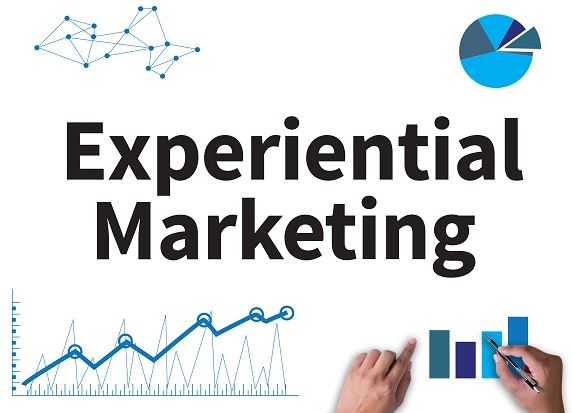Science Marketing and Art Marketing: Marketing research and branding
Science Marketing and Art Marketing: Marketing research is the processes through which the marketing managers collect relevant information about their product and the customers. It also involves an evaluation of the necessary strategies required to develop the correct product that will capture the attention of the customer. It provides the basis for the development of the correct marketing mix and the correct style of marketing. Branding, on the other hand, is the process through which a business develops and creates a unique image and name for a product in the customer’s perspective.
Branding incorporates information marketing research to create a brand that is attractive and present in the customers’ mind. The information from marketing research is important as it presents the customer’s expectations. In other words, branding is the art through which the marketing management delivers the customer’s expectations. It is the means through which the marketing management showcases creativity and ability to meet the customers’ expectation. Combining the two strategies creates a mix of art and science that delivers the right product in the eyes of the customer.
Market research
Market research is the process through which managers gather important information about the product from the consumer. It is a science because it involves a combination of processes designed to gather information and knowledge. The science of market research is objective because it aims at gathering relevant information about the customers. Its main objective is to determine the viability of the product from the perspective of the customer. Market research is the process through which the company identifies the possible market and the customer base for the product. It involves understanding the needs of the customers and the means through which the company can modify the product to meet the customer’s expectation. Also, market research involves gathering the necessary information about the customers’ purchasing power and the ability to purchase the product. Through market research, the company can determine the best marketing mix that would help maximize revenue (Burns et al. 2014). Also, the company can use market research to gather information about preexisting segments in the market. Hence, market research is also useful in market segmentation and product differentiation.
Market research is an objective process that involves the identification of the desired market and the development of strategies for information gathering. The management must also analyze the data collected to extract useful information (Burns et al. 2014). It involves the collection of qualitative and quantitative data concerning the customers. The company can either correct the data directly or through existing research. Therefore, the company has to decide whether to use primary or secondary data sources. Primary data refers to the type of data that has not been used in prior research and that the company collects through primary data collection tools. Secondary data, on the other hand, refers to information gathered in a prior research.
The use of prior research implies that secondary data collection involves another entity. When a company chooses to use primary data collection methods, the management has to decide on the objective of the research. The management can decide to collect answers to previously identified issues. Therefore, the management identifies areas of concerns and seeks to collect answers to the questions through market research. The management may also choose to identify new issues in the market. Using this route, the management seeks to collect an array of questions that the customers would like answers to. Whether the company chooses secondary or primary data, the main purpose of market research remains the same, the company seeks to fulfill a certain set of objectives.

Market research is mostly applicable or put into use when an organization seeks to venture into a new market. It is also necessary when the company seeks to rejuvenate its market competitiveness or brand position. Organizations may also opt to identify the characteristics and needs of a special group in its marker. Researching the market may also be necessary when the company seeks to introduce a new product in its existing market (Burns et al. 2014).
Based on the reason behind market research, every form of research will have different objectives and strategies for obtaining the required set of information. For example, a company seeking to venture into a new market has to conduct an investigation of the current interest for the product in the new market. In other words, the organization must collect information to justify the viability of the new product in the target market. Based on the outcome of the research and information gathered, the management can then decide on whether to actualize the plan. If the company establishes that the customers have a viable interest in the product, the move to invest in the new market becomes feasible. However, interest alone is not enough to make a decision to venture into the new market. The organization also has to investigate the price viability and customers’ ability to purchase the product. Hence, the management must develop a strategy that answers all the necessary questions
Branding
Branding is the means through which the management answers to the expectations of the customer by providing the product in a manner that the customers are likely to accept. It involves positioning the product in the mind of the customer and presenting the product in a likable manner. It is an art because it involves the use of knowledge and skills to develop a product. The art of developing a brand is subjective to the information gathered and the need to present a final product that meets the customer’s needs and expectations. Branding involves the development of the product and means to position the product in the minds of the customers (Latif et al., 2014). Therefore, the art of branding involves the physical aspect of designing and developing the brand in form of the product appearance and composition. The physical aspect of branding involves the development of an attractive and memorable product. The physical aspect of branding involves creatively designing the aspects of the company that relates directly to the customer. One is the physical appearance of the product. A good example of vigorous branding is the Fanta brand of Coca-Cola that continuously changes shape and appearance to capture the customers’ attention.
Similarly, physical branding involves the development of the company’s logo in a unique and appealing manner. The logo is the main identifier for any given organization. Its uniqueness determines the company’s ability to position itself in the market (Latif et al., 2014). Therefore, the company must design the logo uniquely and outstandingly. It also involves the development of a company slogan. The slogan must reflect the values of the company and appear in a manner that keeps it viable in the eyes of the customers. Like the logo, the slogan will most likely be visible to the customers at all times. Hence, the slogan must stand out in the market. Most companies identify by the brand. A well-established brand often appears to be similar to the company. Most customers consider the brand to be the same as the company (Latif et al., 2014). Even for companies that have a brand name different from the company name, customers often confuse the company with the brand.
The art of branding involves several aspects that define the company’s position in the market. Brand positioning is particularly important in marketing (Latif et al., 2014). It involves the setting up the brand in a manner that is noticeable and memorable. The brand position is a marketing strategy that is directed at creating a unique appearance to the customers. Other than the design of the logo and the slogan, positioning the brand may also include printing the brand name, logo, and slogan on the company products. The art of positioning has evolved to include online presence and ease of accessibility of information in social media and on the internet. The company can also improve the position of the brand by carefully placing the logo or the slogan in the customers’ daily activities. The Coca-Cola Company is usually very active in brand positioning. For example, the share a coke market campaign positions the company logo and slogan at the heart of summer celebrations. The company also uses promotional campaigns to position the brand in sports and other activities to keep the brand in the customer’s minds.
Science Marketing and Art Marketing
Marketing requires a combination of science and art to achieve its objectives. The application of scientific strategies in marketing allows marketing managers to collect sufficient data. It allows managers to track marketing expenditure and effectiveness. According to Gross (2017), the ease of data collection and marketing research through digital marketing enables the success of marketing strategies. Such a scenario indicates the importance of data collection and market research. According to Gross (2017), the integration between science and art in marketing guarantees the success of any marketing campaign. The organization must find a balance between the art and science of marketing in order to achieve the objectives set. Strategic marketing management is the simply the development of strategies that combine the art and science in marketing. It involves developing the necessary skills and techniques that enable the company to achieve its marketing objectives.
Therefore, market research and branding are simple methods of defining a multifaceted and complex science and art marketing. The discipline involves developing a synergy between the science in market research and the art in branding. The data collected in market research is helping the company to design and develop a unique and lasting market brand. Other marketing strategies whether art or science come into play to make the processes successful. For example, marketing managers can employ strategic marketing to develop strategies for the implementation of research and branding. Similarly, the marketing managers can employ product design in branding as described above to position the brand on the products. By combining marketing science and art, marketing managers develop strategies to achieve marketing objectives. Therefore, the two forms of marketing must work together for the betterment of the marketing department.
References
Burns, A. C., Bush, R. F., & Sinha, N. (2014). Marketing research (Vol. 7). Harlow: Pearson.
Gross, J. (2017). Marketing: The Convergence of Art and Science. Forbes. December 1. 2017.
Latif, W., B. Islam, A. & Mdnoor, I. (2014). Building Brand Awareness in the Modern Marketing Environment: A Conceptual Model.
Relevant posts
Example Marketing Dissertations
Dissertation Topic Examples Marketing
I hope you enjoyed reading this post on Science Marketing and Art Marketing. There are many other titles available in the Marketing Dissertation Collection that should be of interest to marketing students and practitioners. There are many dissertation titles that relate to other aspects of marketing such as branding, corporate advertising, marketing strategy and consumerism to name a few. I would be grateful if you could share this post via Facebook and Twitter. Feel free to add your thoughts in the comments section. Thank you.




